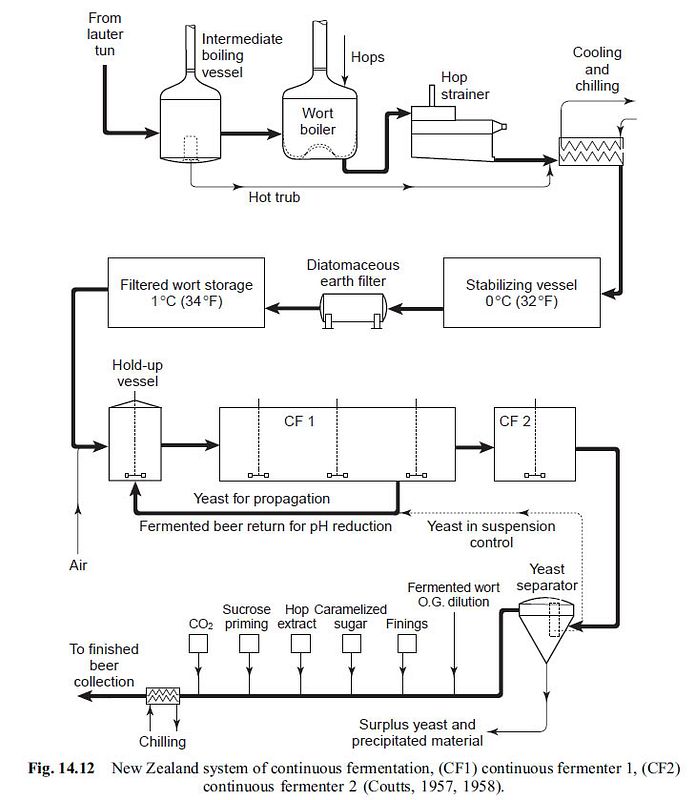Yeah, I've been giving the pressure ferment a go lately. The principle seems to be that CO2 pressure prevents the yeast from generating esters which would otherwise result from the warmer ferment.
I set it up in a 50L keg. I have a coupler connected with cornelius style adapters, with the spunding valve and pressure gauge attached to the gas post.
I brewed a 40L batch of pale lager with 2042 danish lager yeast - I used a whole cake of yeast from a previous non-pressure batch. I fermented at 14 degrees and 18 psi, however I was careful to start the ferment cold, at about 4 degrees on pitching. I do this so as to ensure a minimum of esters while there is not yet any top pressure. The ferment came up to pressure within a day or so, and then I set the temperature to 14 degrees - in this weather I need heating for lagers!
It is pretty amazing how much CO2 is generated when the ferment is going full blast, it is a like a gas leak going on in the fridge.
Anyhow the primary ferment was done in about six days - the beer was halfway carbonated at that pressure and temperature so it is nice for tasting the hydro samples. As advertised, the beer was not at all estery or fruity, there was no acetaldehyde, or diacetyl/VDKs. Good malt character. There was a fair bit of sulfur, which is to be expected with the closed lager ferment. This was pretty full on at day 7 but after another week it had mellowed out a great deal. The sulfur goes away on its own after a while, or you can wash it out with a bit more CO2 if you are in a hurry. It does give the beer a bit of a commercial character.
I actually dispensed 20 litres of this brew at a party that was on only two weeks after brew day, the keg got sucked down pretty quick, it stood well beside beers brewed traditionally.
I can post some pictures of the setup if anyone likes, it is pretty simple.









